Scott #238, a 15 cent stamp issued as part of the 1893 Columbian Exposition series, holds historical significance as a commemoration of the 400th anniversary of Christopher Columbus’s first voyage to the Americas. The series, known for its elaborate designs and commemorative intent, included 16 denominations ranging from one cent to five dollars, each depicting scenes or themes related to Columbus’s journey.
Scott #238 specifically illustrates “Columbus Announcing His Discovery,” a pivotal moment in the narrative of European exploration. While the primary purpose of these stamps was to serve standard postal functions, their release coincided with the World’s Columbian Exposition held in Chicago, a major cultural event of the era.
Design & Print
Scott #238 was printed by the American Bank Note Company, a federal agency responsible for producing U.S. postage stamps at the time. The 15 cent denomination was produced in 1893, with a total quantity of approximately 1.5 million stamps issued. The stamp’s design features an engraving of Columbus standing before an audience, announcing his discovery of new lands. The artwork’s intricate details showcase both the figures and the symbolic elements of the scene, framed within an ornate border that characterizes the Columbian Exposition series.
The paper used was unwatermarked, and the perforation gauge was 12. The ink color for Scott #238 is a distinct dark green, a choice that differentiates it from other denominations in the series while maintaining aesthetic harmony.
Postal Usage
The 15 cent denomination of Scott #238 was primarily intended to cover specific postal rates in effect at the time. For example, it could be used to pay for higher-tier services, such as registered mail or combined domestic and international rates. In 1893, first-class postage for domestic letters was two cents per ounce, while international rates varied depending on the destination. Thus, the 15 -cent stamp often appeared on heavier mailpieces or those requiring additional services.
Its issuance during a period of increasing globalization and postal standardization reflects the evolving demands of the late 19th-century postal system.
The Columbian Exposition series’ release coincided with changes in postal administration and advancements in printing technology, both of which aimed to enhance the efficiency and reliability of mail delivery. While Scott #238 served a functional purpose, its commemorative nature also aligned with broader efforts to promote the exposition and celebrate historical achievements.
Identification
Scott #238 can be identified by its specific design and physical characteristics. The central vignette, engraved in dark green ink, depicts Columbus standing with a gesture of triumph while addressing an audience. The stamp’s border includes scrollwork and inscriptions indicating the denomination and the title of the scene. “United States of America” appears prominently at the top, while “Postage Fifteen Cents” is inscribed below it.
To differentiate Scott #238 from other stamps in the Columbian Exposition series, collectors and postal historians should focus on the denomination, depicted clearly in the design, and the dark green ink used for this specific value.
The top left corner says “1492” while the top right corner says “1892”. Not to be confused with the 1992 reissue (Scott #2628b) that says “1992” in the top right corner.

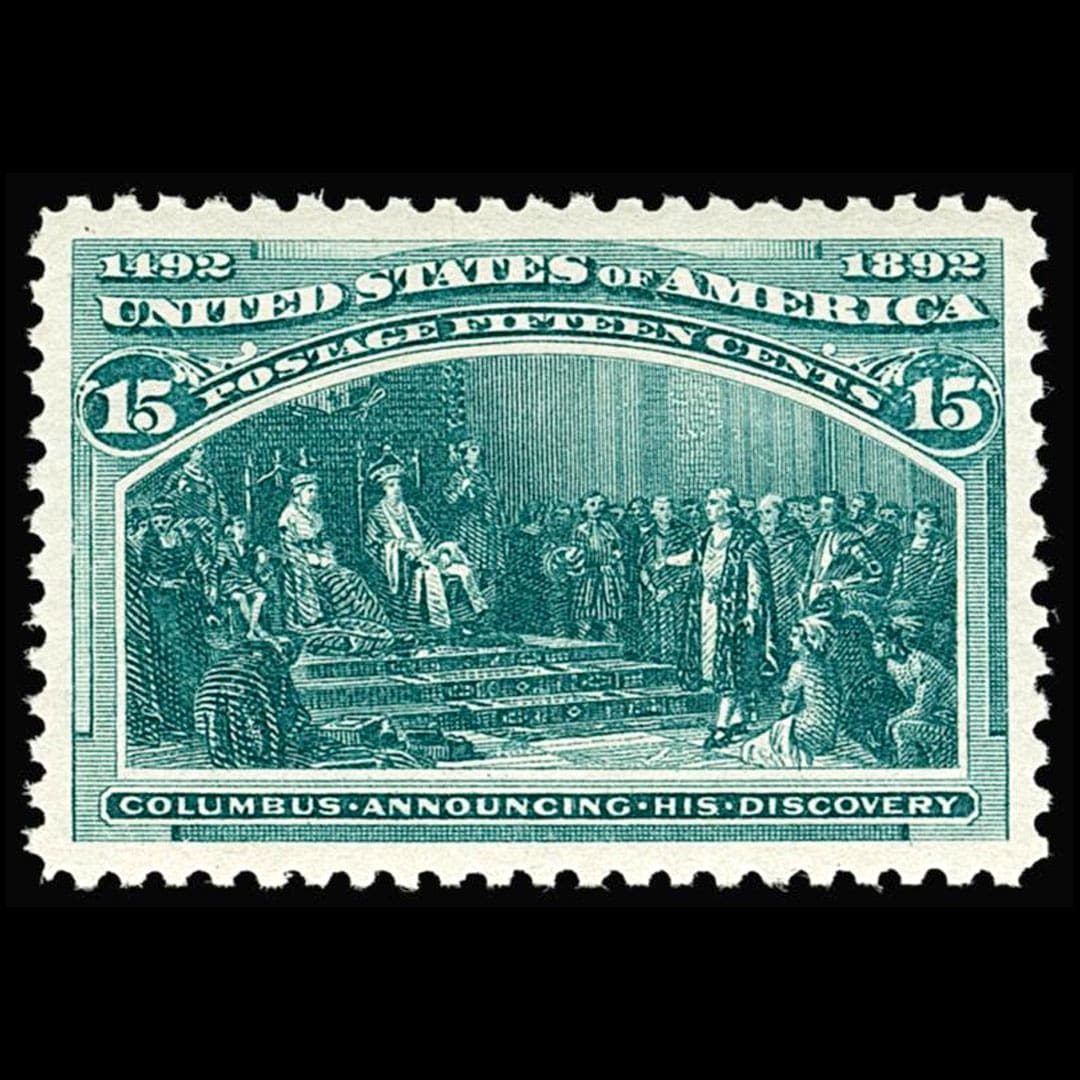



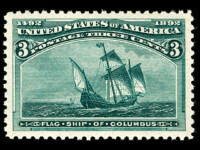
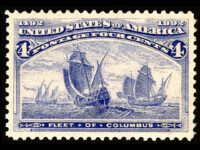
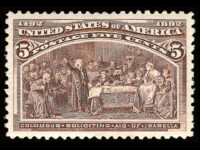
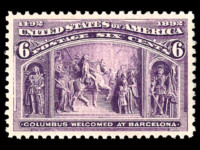
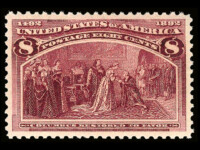
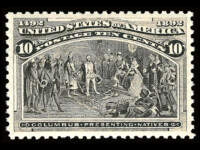
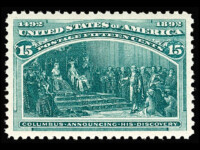
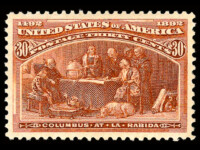
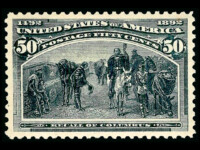
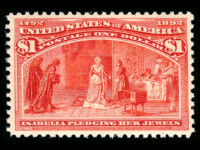
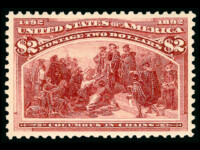
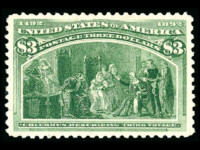
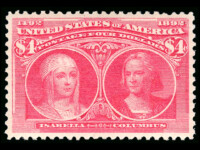
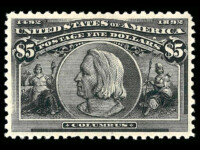











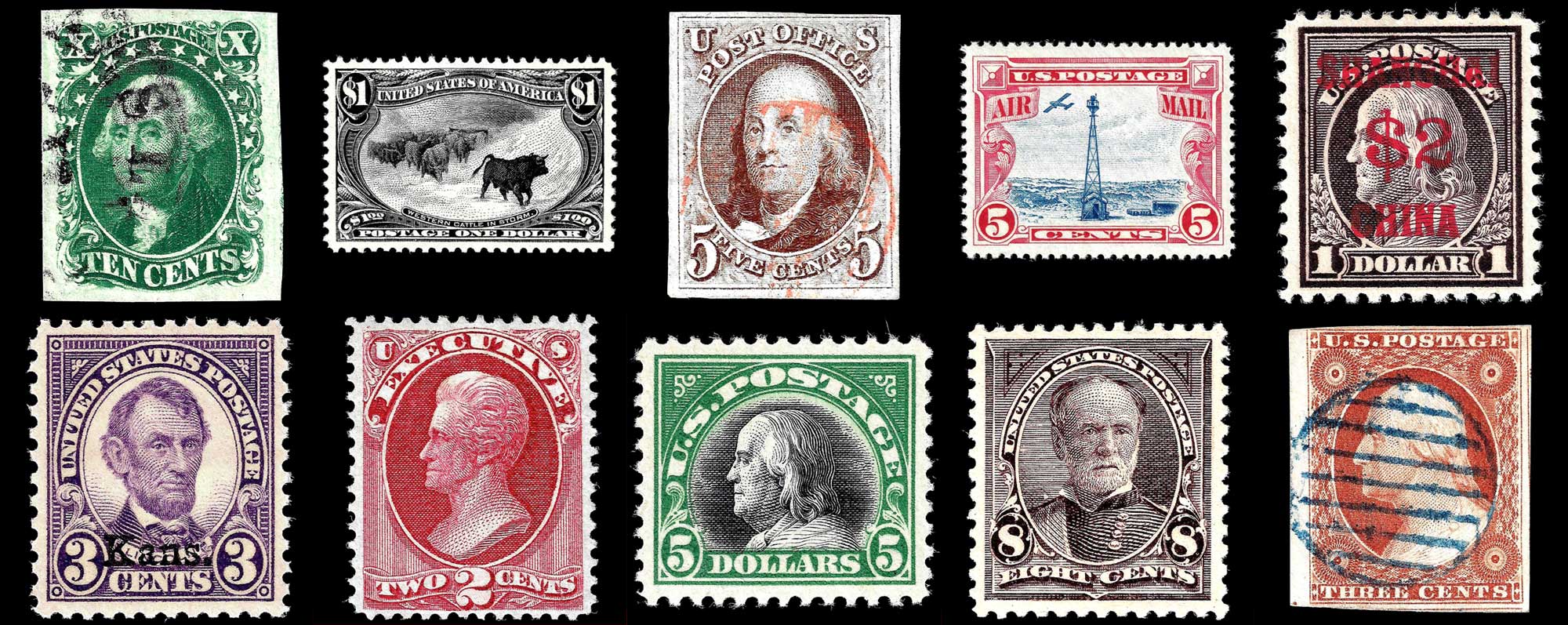
Ask A Question Or Leave A Comment